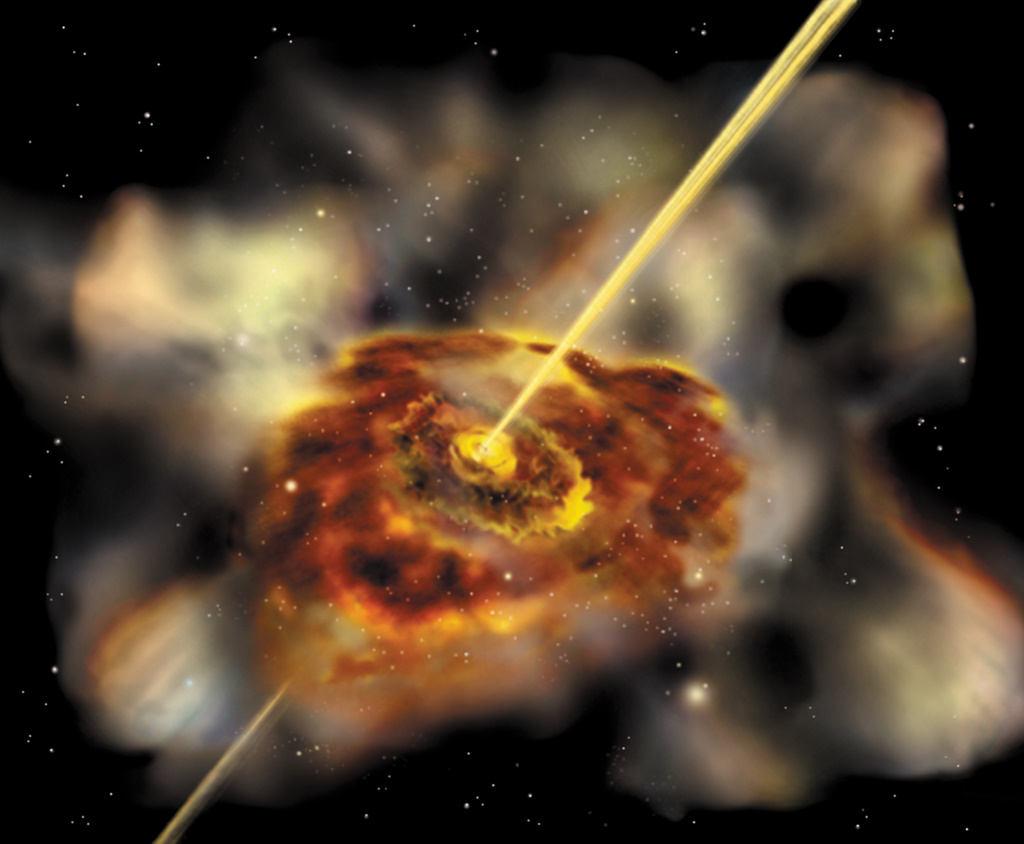The massive galaxy cluster Abell 2261 should have a supermassive black hole in its center. But it doesn’t. Astronomers have looked everywhere – even between the couch cushions. What’s going on?
Giant black holes, also known as supermassive black holes, are basically everywhere, sitting in the heart of almost every single known galaxy. Even our own Milky Way sports one, a beast over 4 million times the mass of the sun, known as Sagittarius A* (and the subject of the most recent award of the Nobel Prize in physics).
Unfortunately, supermassive black holes by themselves are hard to detect – they are black, after all. Instead, astronomers find them by the material that surrounds them. As all those tons of gas and dust cram down into the event horizon, they heat up and glow to tens of millions of degrees Kelvin. At that temperature, the material emits copious amounts of X-ray radiation – an unmistakable sign of a giant black hole.
By all rights, the giant elliptical galaxy sitting at the center of the galaxy cluster Abell 2261 should have such a black hole with its corresponding intense X-ray emission. But repeated scans with NASA’s Chandra X-ray observatory have revealed nothing. Nada. Zilch. It’s empty.
Previous scans with the NSF’s Karl G. Jansky Very Large Array, hunting for ghosts of radio emission, showed that there was significant activity in the cluster 50 million years ago – but not today.
What’s going on? One possibility is that two (slightly smaller but still supermassive) black holes merged in the recent past. When they merge, they emits tremendous amounts of gravitational waves, and this emission can “kick” the resulting black hole clear out of the host galaxy. One clue that this may have happened is the fact that the densest cluster of stars in the central galaxy sits over 2,000 lightyears away from the true center of the galaxy. That’s much farther than normal.
But there’s no X-ray emission from that clump either. The only possibility left is that the black hole is sleeping – if it’s not currently feeding, it won’t produce that telltale X-ray glow.
If we get lucky, the giant may wake from its slumber soon, revealing its true location to the universe – and letting us sleep at night.

